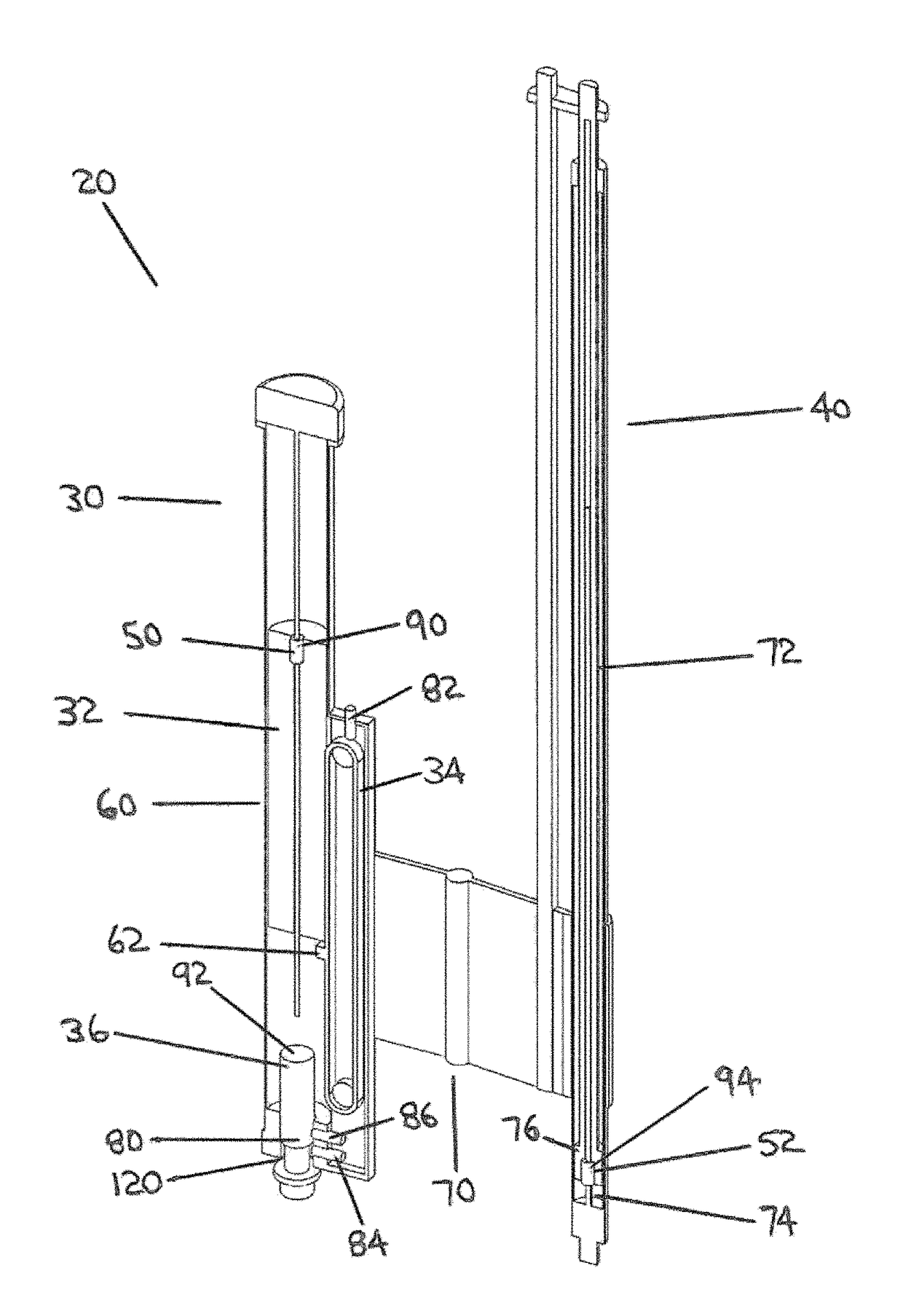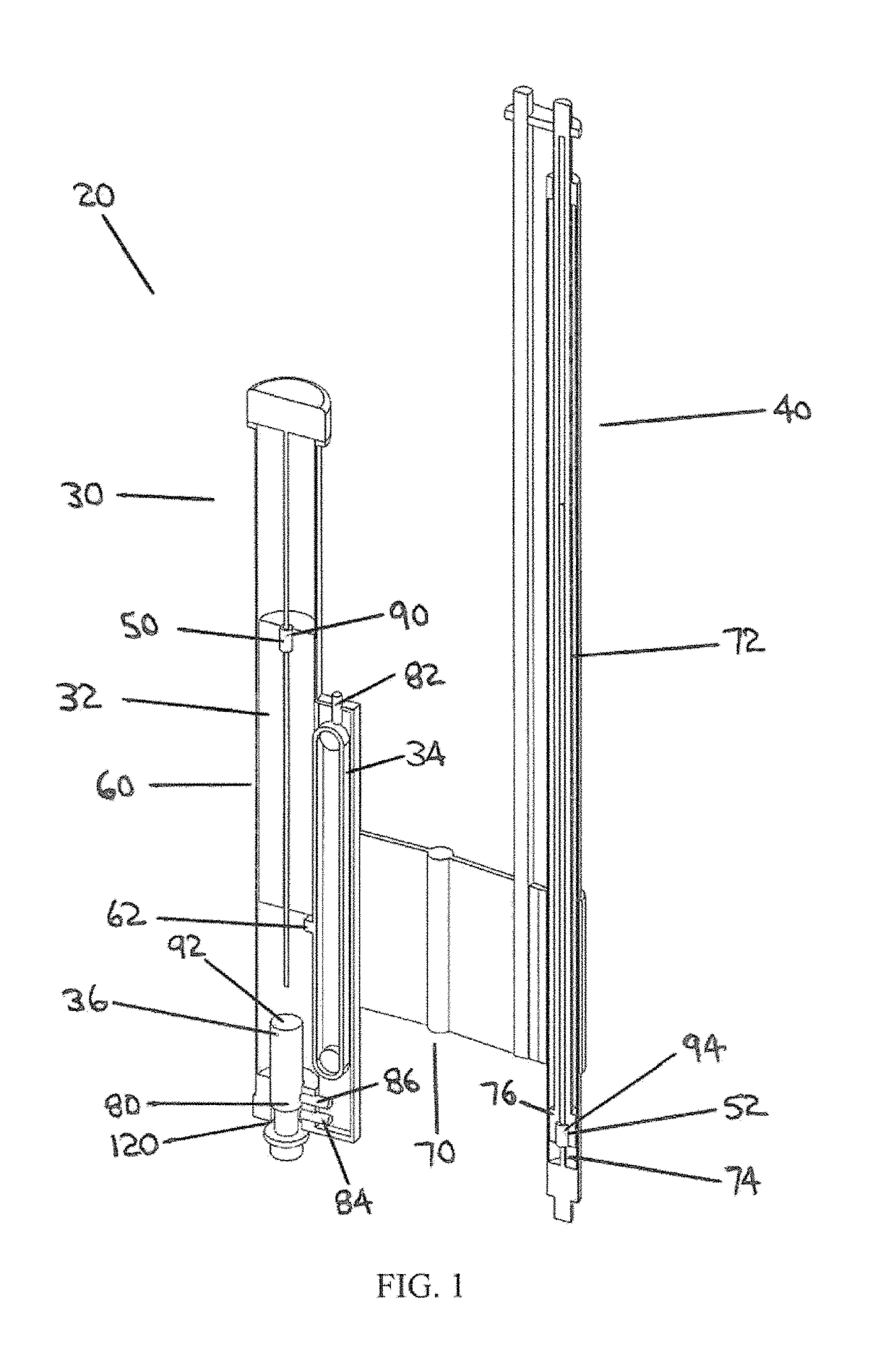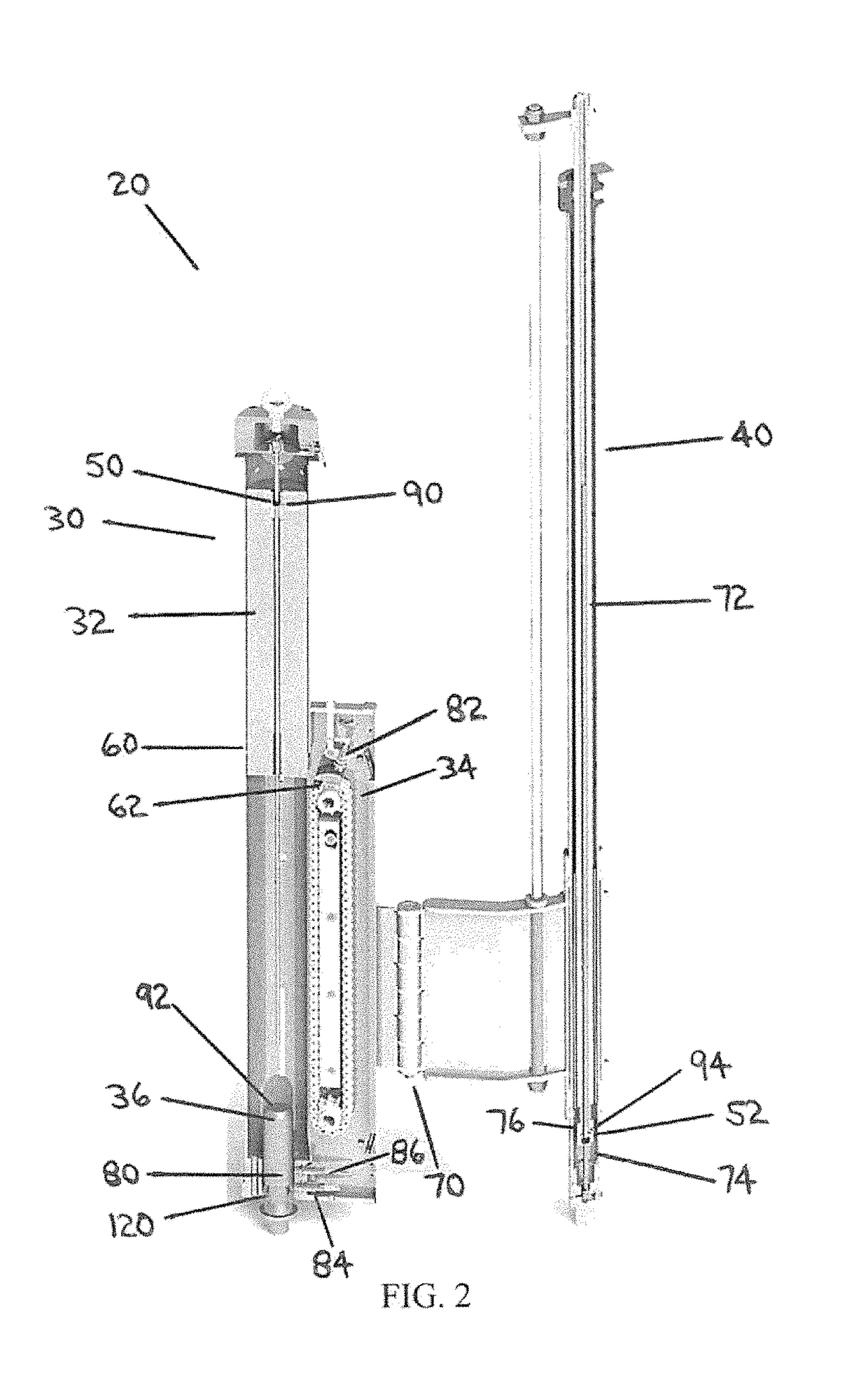An apparatus and a method for performing a standard penetration test
a technology of standard penetration test and apparatus, which is applied in the direction of geological measurement, seismology, in situ soil foundation, etc., can solve the problems of inability to accurately ascertain difficulty in ascertaining the exact location of the ground surface, and inability to accurately mark the distance increments, etc., to reduce the inertia of the hammer, reduce the lifting speed, and reduce the lifting speed
- Summary
- Abstract
- Description
- Claims
- Application Information
AI Technical Summary
Benefits of technology
Problems solved by technology
Method used
Image
Examples
first exemplary embodiment
The First Exemplary Embodiment
[0147]The first exemplary embodiment of the system (20) for performing a standard penetration test includes 3 proximity sensors and 2 linear displacement sensors. The first exemplary embodiment of the system (20) may be used to perform a first exemplary embodiment of a method for performing a standard penetration test.
[0148]The first proximity sensor (84), referred to herein as the “anvil sensor”, senses when the anvil (36) is in position. The second proximity sensor (86), referred to herein as the “anvil missing sensor”, senses if the anvil (36) is received within the hammer assembly (30). A third proximity sensor senses each time the lift link (62) travels around the top sprocket of the chain drive and thus functions as the lift counter (82).
[0149]The hammer sensor (50), comprising a first linear displacement sensor, tracks the hammer (32) within the hammer assembly (30) and the elevator sensor (52), comprising a second linear displacement sensor, tra...
second exemplary embodiment
The Second Exemplary Embodiment
[0198]The second exemplary embodiment of the system (20) for performing a standard penetration test is similar to the first exemplary embodiment, but omits the 3 proximity sensors (84, 86, 82). As a result, the second exemplary embodiment includes only 2 linear displacement sensors (50, 52). The second exemplary embodiment of the system (20) may be used to perform a second exemplary embodiment of a method for performing a standard penetration test.
[0199]The hammer sensor (50), comprising a first linear displacement sensor, tracks the hammer (32) within the hammer assembly (30) and the elevator sensor (52), comprising a second linear displacement sensor, tracks the elevator piston (76) within the elevator cylinder (74). A linear transducer that is capable of tracking at a suitable resolution an object moving at velocities up to those which may be experienced by the hammer (32) as it is dropped is used in the second exemplary embodiment as the hammer sen...
third exemplary embodiment
The Third Exemplary Embodiment
[0225]A third exemplary embodiment of a method for performing a standard penetration test utilizes the same physical components as the second exemplary embodiment of the system (20), but eliminates the use of time delays in the system (20). Accordingly, the second exemplary embodiment of the system (20) may be adapted to perform the third exemplary embodiment of a method for performing a standard penetration test.
[0226]Hydraulic system behavior can vary dramatically from one drilling system to another. In the third exemplary embodiment, events have been established to control the order of functions of the system (20), regardless of the varying hydraulic system behaviors. In the third exemplary embodiment, nine events are used, based on the position of the hammer (32) within the hammer assembly (30). In other embodiments, fewer or greater than nine events may be used. In the third exemplary embodiment, an event uses ten proportional-integral-derivative (...
PUM
| Property | Measurement | Unit |
|---|---|---|
| height | aaaaa | aaaaa |
| height | aaaaa | aaaaa |
| height | aaaaa | aaaaa |
Abstract
Description
Claims
Application Information
 Login to View More
Login to View More - R&D
- Intellectual Property
- Life Sciences
- Materials
- Tech Scout
- Unparalleled Data Quality
- Higher Quality Content
- 60% Fewer Hallucinations
Browse by: Latest US Patents, China's latest patents, Technical Efficacy Thesaurus, Application Domain, Technology Topic, Popular Technical Reports.
© 2025 PatSnap. All rights reserved.Legal|Privacy policy|Modern Slavery Act Transparency Statement|Sitemap|About US| Contact US: help@patsnap.com



